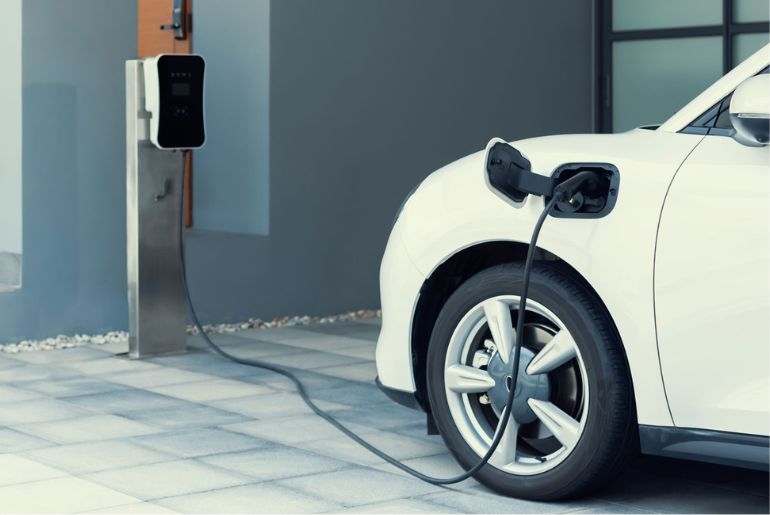The rapid growth of electric vehicles (EVs) has led to significant advancements in powertrain technology, with a key focus on optimizing efficiency, performance, and reliability. One of the most critical components of an EV’s powertrain is the Electric Power Control Unit (EPCU), which plays a crucial role in managing the distribution of electrical power within the vehicle. The EPCU serves as the brain of an EV’s power system, ensuring seamless operation between the battery, inverter, and motor.
For high-performance electric vehicles, the design and manufacturing of EPCU present several challenges that impact efficiency, thermal management, durability, and cost-effectiveness. As automakers push for greater power output, faster acceleration, and enhanced range, addressing these challenges is essential to advancing EV technology. This article explores the key difficulties in EPCU design and manufacturing for high-performance electric vehicles and how the industry is tackling them.
-
Thermal Management Challenges
High-performance electric vehicles require EPCUs capable of handling large amounts of electrical power while maintaining efficiency. This results in substantial heat generation, which must be managed effectively to prevent system failures and performance degradation.
Key Issues in Thermal Management:
- Heat Dissipation: The EPCU contains power electronics that generate heat under high loads, requiring efficient cooling solutions.
- Material Limitations: Conventional materials used in EPCU manufacturing may struggle to withstand high temperatures.
- Size vs. Cooling Efficiency: Compact EPCUs save space but often compromise cooling performance, making it difficult to balance thermal regulation with size constraints.
Solutions:
- Advanced Cooling Systems: Liquid cooling and phase-change materials are being explored to enhance heat dissipation.
- Improved Semiconductor Materials: The use of silicon carbide (SiC) and gallium nitride (GaN) semiconductors in EPCU design improves efficiency while reducing heat generation.
-
Power Density and Efficiency
For high-performance electric vehicles, the EPCU must deliver high power density while maintaining efficiency. Increasing power density allows for a more compact and lightweight design, which directly impacts vehicle performance and range.
Key Challenges:
- Power Conversion Losses: Inefficiencies in the EPCU lead to energy losses, reducing overall vehicle efficiency.
- Voltage Handling: High-performance EVs often require higher voltages (800V systems) to improve power efficiency, but this increases the complexity of EPCU design.
- Component Miniaturization: Reducing the size of components while increasing power density is challenging due to heat dissipation and material constraints.
Solutions:
- Use of Wide Bandgap Semiconductors: Materials like SiC and GaN enhance power conversion efficiency and enable higher voltage operation.
- Optimization of Power Electronics Design: Advanced topologies such as multi-level inverters and dual-stage power converters improve power flow and efficiency in EPCUs.
-
Manufacturing Challenges in EPCU Production
The manufacturing of EPCUs for high-performance electric vehicles presents unique challenges, including cost, quality control, and integration complexity. Unlike traditional internal combustion engine components, EPCUs require precision manufacturing techniques to ensure high performance and reliability.
Key Manufacturing Challenges:
- Material Availability and Cost: The raw materials used in EPCU components, such as rare-earth magnets and high-performance semiconductors, can be expensive and difficult to source.
- Complex Assembly Processes: EPCU production involves intricate PCB designs, thermal management solutions, and high-voltage safety mechanisms, making manufacturing more complex than traditional automotive components.
- Quality Control and Testing: Ensuring each EPCU meets safety and performance standards is essential, requiring rigorous testing procedures that increase production costs.
Solutions:
- Automation in Manufacturing: Implementing robotic assembly lines can enhance precision and reduce defects in EPCU production.
- Advanced Quality Control Techniques: AI-driven inspection systems and real-time performance monitoring help detect manufacturing defects early.
- Supply Chain Optimization: Diversifying suppliers and investing in material research can mitigate raw material shortages and reduce costs.
-
Reliability and Durability Under Extreme Conditions
High-performance electric vehicles often operate under extreme conditions, including rapid acceleration, high-speed driving, and variable weather environments. The EPCU must be designed to withstand mechanical vibrations, high temperatures, and electrical stress.
Challenges:
- Electromagnetic Interference (EMI): High-power electronics in the EPCU can create EMI, which may affect other vehicle systems.
- Environmental Factors: Exposure to dust, moisture, and extreme temperatures can degrade EPCU components over time.
- Longevity vs. Performance: High-performance EPCUs need to balance long-term reliability with the demands of peak power output.
Solutions:
- Advanced Encapsulation Techniques: Protective coatings and sealed housings prevent environmental damage.
- EMI Shielding Technologies: Improved grounding and shielding techniques reduce electromagnetic interference.
- Robust Testing Protocols: Accelerated lifecycle testing helps identify potential failure points before EPCUs are deployed in vehicles.
-
Integration with Vehicle Systems
The EPCU does not operate in isolation; it must seamlessly integrate with the EV’s battery management system (BMS), motor control unit (MCU), and vehicle control unit (VCU). Ensuring smooth communication between these systems is crucial for optimal vehicle performance.
Integration Challenges:
- Software Complexity: The EPCU requires sophisticated control algorithms to optimize power delivery and regenerative braking.
- Interoperability Issues: Different automakers use varying architectures, making standardization difficult.
- Cybersecurity Risks: As EPCUs become more connected, they are vulnerable to cyber threats that could impact vehicle functionality.
Solutions:
- Standardized Communication Protocols: Using industry-standard protocols such as ISO 15118 helps improve interoperability.
- Enhanced Cybersecurity Measures: Encryption and intrusion detection systems protect against cyberattacks on the EPCU.
- AI-Based Predictive Maintenance: Machine learning algorithms can analyze EPCU performance data to predict and prevent failures.
Conclusion
The Electric Power Control Unit (EPCU) is a vital component in high-performance electric vehicles, responsible for efficient power distribution and system management. However, designing and manufacturing EPCUs comes with numerous challenges, including thermal management, power density, manufacturing complexities, reliability concerns, and system integration.
By leveraging advanced materials, innovative cooling solutions, and AI-driven quality control, manufacturers are overcoming these challenges to enhance EPCU performance and ensure the continued evolution of high-performance EVs. As the demand for powerful, efficient, and reliable electric vehicles continues to rise, advancements in EPCU technology will be critical in shaping the future of sustainable mobility.


